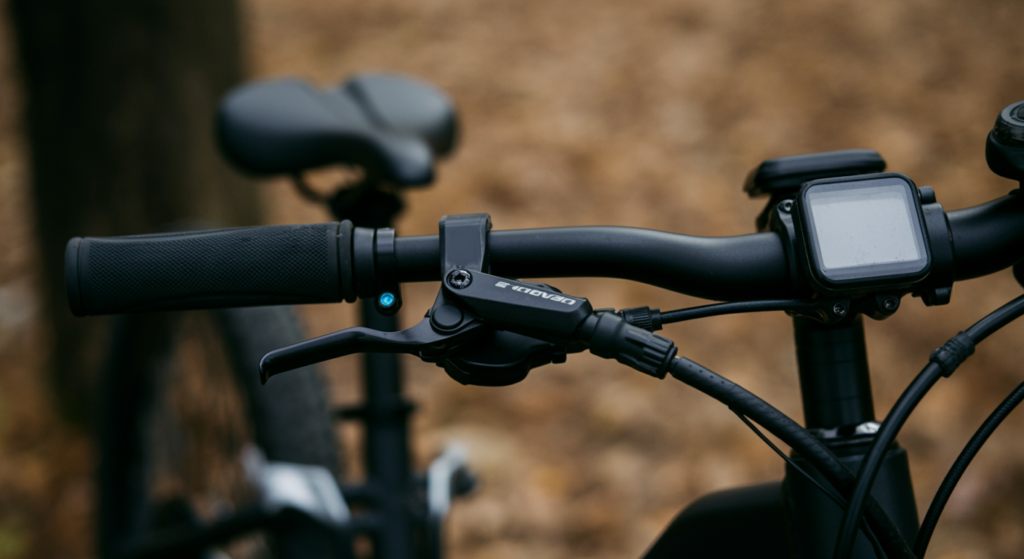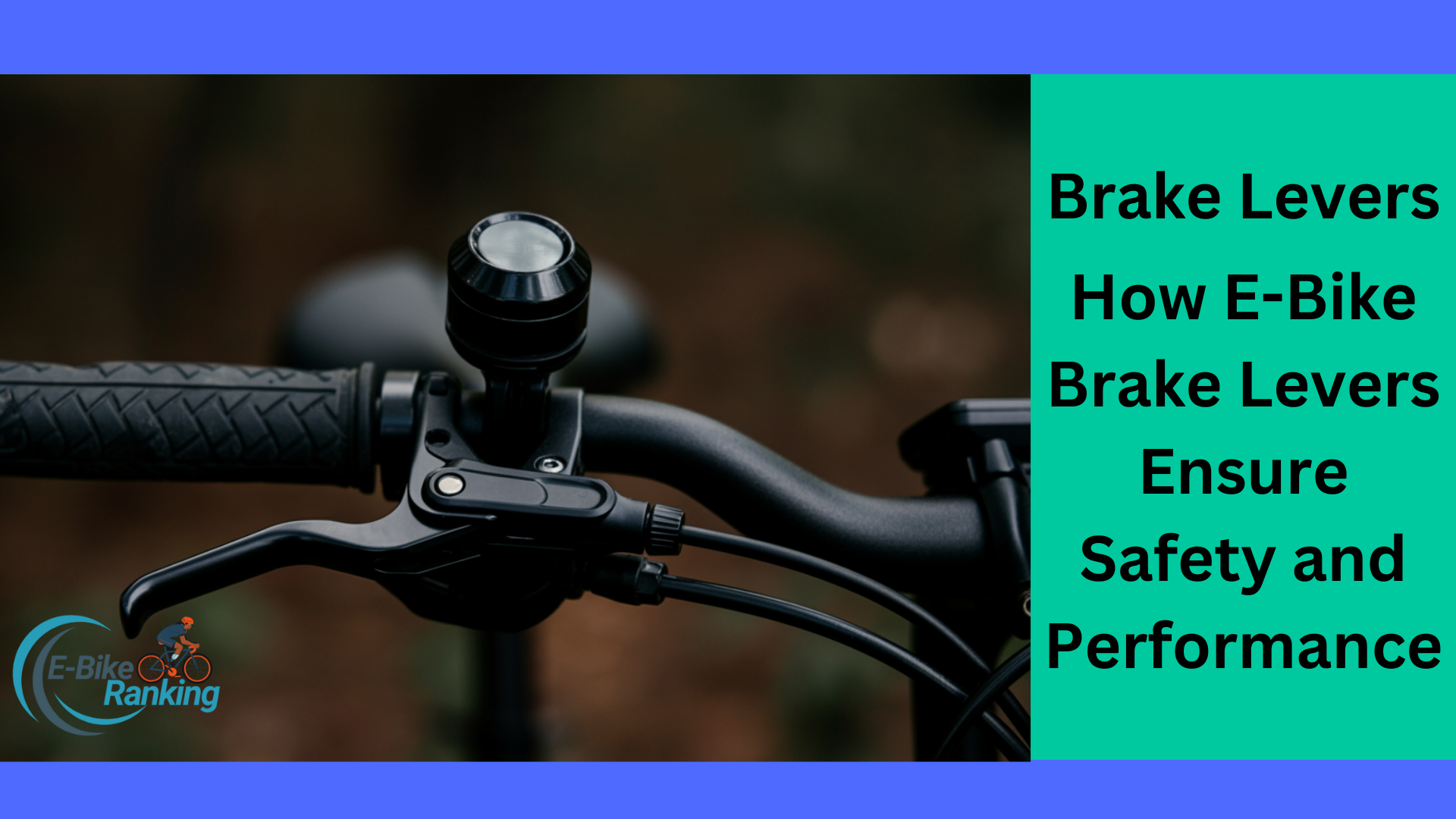E-bikes have transformed urban commuting and recreational cycling, offering speed, efficiency, and convenience. However, with increased power and speed, the need for reliable braking systems becomes even more crucial. Brake levers serve as the rider’s primary point of control over the braking system, ensuring smooth and safe stops. This article explores the significance of advanced brake lever technology in e-bikes, demonstrating how innovations in design and functionality improve rider safety and performance.
Brake Levers
Definition: What Are Brake Levers and How Do They Function?
Brake levers are the components mounted on the handlebars that allow riders to engage the braking system. When pulled, they create a mechanical or hydraulic force that slows or stops the bike. Brake levers act as the interface between the rider and the braking system, making their efficiency and responsiveness vital for safe riding.

Types of Brake Levers
There are two primary types of brake levers used in e-bikes:
- Mechanical Brake Levers – These use a steel cable to transfer force from the lever to the braking mechanism. While simple and affordable, they require frequent adjustments and maintenance.
- Hydraulic Brake Levers – These use fluid-filled systems to engage the brakes, providing superior stopping power, smoother modulation, and less maintenance.
Importance in E-Bikes
Since e-bikes are heavier and often travel at higher speeds than traditional bicycles, effective braking is essential. High-quality brake levers improve safety by offering better responsiveness, reducing stopping distances, and ensuring controlled deceleration, especially in emergency situations.
Safety Features of E-Bike Brake Levers
Design Innovations
Modern brake levers are designed with ergonomics in mind to reduce rider fatigue and enhance comfort. Features such as:
- Ergonomic grips that reduce hand strain on long rides.
- Two-finger or one-finger operation for more precise control and less effort.
- Anti-slip textures that improve grip in wet conditions.
Material and Durability
The materials used in brake levers directly impact their reliability and longevity. High-end models are typically made of:
- Aluminum Alloy: Lightweight and corrosion-resistant, offering durability without added bulk.
- Carbon Fiber: Even lighter than aluminum, providing high strength but at a higher cost.
- Reinforced Plastic: Found in budget-friendly options, though it lacks the durability of metal alternatives.
Integration with E-Bike Systems
Advanced e-bike brake levers often feature smart integrations that enhance safety. Key innovations include:
- Motor Cut-Off Sensors: Automatically disengages the motor when the brakes are applied, preventing accidental acceleration.
- Electronic Braking Systems (EBS): Found in high-end models, EBS ensures smoother, more consistent braking.
- Automatic Brake Lights: Some e-bikes activate brake lights when the levers are engaged, improving visibility.
Performance Enhancements
Precision and Control
Advanced brake levers offer better modulation, allowing riders to apply braking force gradually rather than abruptly. This results in:
- More controlled stops that reduce skidding and enhance stability.
- Increased confidence when riding at high speeds or downhill.
Weather Performance
Weather conditions significantly affect braking efficiency. High-quality brake levers come with:
- Sealed hydraulic systems to prevent water ingress.
- Corrosion-resistant materials for longevity in humid or salty environments.
- Textured levers that provide a firm grip even in wet or snowy conditions.
Adjustability
Brake lever adjustability ensures a custom fit for different hand sizes and riding styles. Common adjustable features include:
- Reach Adjustment: Allows riders to set the lever distance from the handlebar for comfortable operation.
- Bite Point Adjustment: Controls how soon the brakes engage after pulling the lever.
Choosing the Right Brake Levers for Your E-Bike
Factors to Consider
Selecting the best brake levers depends on several factors:
- Weight: Lighter materials improve handling without sacrificing durability.
- Material: Choose between aluminum, carbon fiber, or high-quality plastic based on budget and performance needs.
- Compatibility: Ensure the levers are compatible with your e-bike’s braking system, whether mechanical or hydraulic.
- Riding Style: Commuters may prioritize comfort and ease of use, while mountain bikers may prefer high precision and durability.
Popular Brands and Models
Some of the most reliable brake levers for e-bikes come from reputable brands such as:
- Shimano Deore XT – Known for exceptional hydraulic braking performance.
- Magura MT5e – Offers advanced motor cut-off integration and powerful stopping power.
- Tektro E350 – A budget-friendly option with reliable braking features.
User Reviews and Recommendations
Many e-bike enthusiasts emphasize the importance of high-quality brake levers for a better riding experience. Testimonials often highlight:
- The superior stopping power of hydraulic levers.
- The benefits of ergonomic designs for long rides.
- The importance of easy maintenance and adjustability.
Maintenance and Care
Regular Checks
Routine maintenance is crucial for brake lever performance. Regular checks should include:
- Inspecting cables or hydraulic lines for wear and tear.
- Checking for proper lever response and smooth operation.
- Ensuring motor cut-off features to function correctly.
DIY Tips
Simple maintenance tasks can be performed at home to keep brake levers in top condition:
- Lubricate pivot points to prevent stiffness.
- Clean regularly to remove dirt and grime that could affect performance.
- Adjust reach settings based on your riding comfort and conditions.
When to Seek Professional Help
If you experience any of the following issues, it’s best to seek expert assistance:
- Spongy braking feel (indicating air in hydraulic lines).
- Levers that feel too loose or too tight.
- Visible damage such as cracks or significant wear.
Conclusion
Brake levers are more than just a simple control mechanism—they are essential for rider safety and performance. From ergonomic designs and durable materials to integrated safety features and precise braking control, advancements in brake lever technology have revolutionized e-biking.
When choosing brake levers for your e-bike, consider factors such as material, adjustability, and compatibility to ensure optimal performance. Regular maintenance will keep your levers functioning smoothly, preventing accidents and enhancing ride quality.
Now’s the time to inspect your e-bike’s brake levers. If you’re looking for an upgrade, explore some of the top models available and experience the difference high-quality brake levers can make!








